 Persia's foreign policy - To help you comprehend Iran's current America policy, you need to look beyond the headlines and search for those fundamental cultural and psychological factors that drive Iran's foreign policy in general and its America policy in particular. No real grasp of Iran's behavior in world politics is possible without appreciating that the Iranian people take deep pride in their culture. They take pride in the influence of their ancient religion, Zoroastrianism, on Judaism, Christianity and Islam. They take pride in fifty centuries of their science, arts and artifacts, in the continuity of their cultural identity over millennium, in having established the first humane Federal World Empire more than 2500 years ago, in having organized the first international society which respected the religions and cultures of the people who were under their rule, in having liberated the Jews from Babylonian captivity, and in having influenced Greek, Roman, Arab, Mongol and Turkish civilizations. But this sense of pride in the greatness of their culture and history is countered by a deep sense of “victimization”. The Iranian people feel they have been oppressed by foreign powers during their long history. They remember that Alexander of Macedonia, Arabs, Mongols and Turks invaded and conquered their homeland. Iranians also remember that the British and the Russian empires exploited them economically and subjugated them politically, and that the CIA of USA destroyed their democratically-elected government and staged a coup in 1953 engineered by the British and American intelligence services that destroyed the popularly-elected government of Dr. Musaddiq. The United States returned the shah to the throne, and American economic, political, military and cultural domination ensued over the following quarter century until the revolution in 1979. Not to mention the Persian civilian airliner Iran Air Flight 655 that was shot down by US missiles on July 1988, killing all 290 passengers and crew aboard, including 66 children, ranking it among the deadliest airliner fatalities. The United States must bear its fair share of responsibility for the problems that have arisen in U.S.-Iranian relations.
Persia's foreign policy - To help you comprehend Iran's current America policy, you need to look beyond the headlines and search for those fundamental cultural and psychological factors that drive Iran's foreign policy in general and its America policy in particular. No real grasp of Iran's behavior in world politics is possible without appreciating that the Iranian people take deep pride in their culture. They take pride in the influence of their ancient religion, Zoroastrianism, on Judaism, Christianity and Islam. They take pride in fifty centuries of their science, arts and artifacts, in the continuity of their cultural identity over millennium, in having established the first humane Federal World Empire more than 2500 years ago, in having organized the first international society which respected the religions and cultures of the people who were under their rule, in having liberated the Jews from Babylonian captivity, and in having influenced Greek, Roman, Arab, Mongol and Turkish civilizations. But this sense of pride in the greatness of their culture and history is countered by a deep sense of “victimization”. The Iranian people feel they have been oppressed by foreign powers during their long history. They remember that Alexander of Macedonia, Arabs, Mongols and Turks invaded and conquered their homeland. Iranians also remember that the British and the Russian empires exploited them economically and subjugated them politically, and that the CIA of USA destroyed their democratically-elected government and staged a coup in 1953 engineered by the British and American intelligence services that destroyed the popularly-elected government of Dr. Musaddiq. The United States returned the shah to the throne, and American economic, political, military and cultural domination ensued over the following quarter century until the revolution in 1979. Not to mention the Persian civilian airliner Iran Air Flight 655 that was shot down by US missiles on July 1988, killing all 290 passengers and crew aboard, including 66 children, ranking it among the deadliest airliner fatalities. The United States must bear its fair share of responsibility for the problems that have arisen in U.S.-Iranian relations.
 Persia has never been an Arabic country and never will be! Iranian people have very strong ties to their history, culture and language, which are distinctively Persian. They are very proud of their rich heritage, strongly admire their former King of Kings, especially Cyrus the Great and his legacy of introducing human rights in a political setting of the longest existing empire in world's history (from 2500 years ago Persia ruled the civilized world for at least 1130 years; Median Dynasty 728–549 B.C, Achaemenid Dynasty 559-330 B.C, Parthian Dynasty 250 B.C. - 226 A.D. and the mighty Sassanid Dynasty 226-651 A.D.). Another reason for which Persians dislike being mistakenly identified as Arabs is because Arab Islamic army conquered Persia in a very brutal way and forced them to change their religion, and customs by the edge of a sword. When Arabs conquered Persia they destroyed our Persian style of Federalism, Equal Rights, Freedom and Democracy and replaced those factors with central brutal government, prejudice and slavery. But Persian culture and rich history conquered them! Persia is the only country which didn't become an Arab country (like Egypt, Babylonia, Assyria and all the other ancient countries conquered and destroyed by Arabs) and in spite of centuries of invasions and foreign rule by Greeks, Arabs, Turks, Mongols etc. Persia has retained its own strong identity. For 14 centuries Arabs has tried to destroy our culture, our language, science, poetry, literature, philosophy, religion, race, traditions, celebrations, music, arts and of course our Calendar. They never fully succeeded! continue »
Persia has never been an Arabic country and never will be! Iranian people have very strong ties to their history, culture and language, which are distinctively Persian. They are very proud of their rich heritage, strongly admire their former King of Kings, especially Cyrus the Great and his legacy of introducing human rights in a political setting of the longest existing empire in world's history (from 2500 years ago Persia ruled the civilized world for at least 1130 years; Median Dynasty 728–549 B.C, Achaemenid Dynasty 559-330 B.C, Parthian Dynasty 250 B.C. - 226 A.D. and the mighty Sassanid Dynasty 226-651 A.D.). Another reason for which Persians dislike being mistakenly identified as Arabs is because Arab Islamic army conquered Persia in a very brutal way and forced them to change their religion, and customs by the edge of a sword. When Arabs conquered Persia they destroyed our Persian style of Federalism, Equal Rights, Freedom and Democracy and replaced those factors with central brutal government, prejudice and slavery. But Persian culture and rich history conquered them! Persia is the only country which didn't become an Arab country (like Egypt, Babylonia, Assyria and all the other ancient countries conquered and destroyed by Arabs) and in spite of centuries of invasions and foreign rule by Greeks, Arabs, Turks, Mongols etc. Persia has retained its own strong identity. For 14 centuries Arabs has tried to destroy our culture, our language, science, poetry, literature, philosophy, religion, race, traditions, celebrations, music, arts and of course our Calendar. They never fully succeeded! continue »
 Iran progressed by huge leaps and bounds in the seventies and was labeled by the West as an outstanding economic performer with record earnings and revenues. But those halcyon days are now gone. One of the world's longest-lasting monarchies, the Iranian monarchy went through many transformations over the centuries, from the days of Persia to the creation of what is now modern day Iran. Shah: also known by his people as 'Shahanshah' (King of Kings), ascended the throne on September 1941-1979. At the time of the golden jubilee of the Pahlavi dynasty he had ruled for thirty-five years, thus more than doubling the period during which his father directed Iran's policies as head of state.
Iran progressed by huge leaps and bounds in the seventies and was labeled by the West as an outstanding economic performer with record earnings and revenues. But those halcyon days are now gone. One of the world's longest-lasting monarchies, the Iranian monarchy went through many transformations over the centuries, from the days of Persia to the creation of what is now modern day Iran. Shah: also known by his people as 'Shahanshah' (King of Kings), ascended the throne on September 1941-1979. At the time of the golden jubilee of the Pahlavi dynasty he had ruled for thirty-five years, thus more than doubling the period during which his father directed Iran's policies as head of state.
Basica lly, The Shah's reign displayed the same two trends as were characteristic of his father's period, nationalism and modernization. There were other similarities as well: the new King faced at the beginning foreign occupation and interference, he was challenged by tribal rebellion and unrest, and was beset by an upsurge of provincial separatism and communism. He also had to wage a struggle for economic independence from British dominance of the oil sector. And, like his father, he searched for a friendly third force that would counterbalance both the Soviet and the British influence.
lly, The Shah's reign displayed the same two trends as were characteristic of his father's period, nationalism and modernization. There were other similarities as well: the new King faced at the beginning foreign occupation and interference, he was challenged by tribal rebellion and unrest, and was beset by an upsurge of provincial separatism and communism. He also had to wage a struggle for economic independence from British dominance of the oil sector. And, like his father, he searched for a friendly third force that would counterbalance both the Soviet and the British influence.
 During World War II, Britain and the USSR were concerned by Reza Shah's friendly relations with Germany. In 1941 the two countries invaded and occupied large areas of Iran. They forced Reza Shah to abdicate, and in the absence of a viable alternative, permitted The Shah to assume the throne. The new shah's reign began against a backdrop of social and political disarray, economic problems. Despite his vow to act as a constitutional monarch who would defer to the power of the parliamentary government, The Shah increasingly involved himself in governmental affairs and opposed or thwarted strong prime ministers. He continued the reform policies of his father.
During World War II, Britain and the USSR were concerned by Reza Shah's friendly relations with Germany. In 1941 the two countries invaded and occupied large areas of Iran. They forced Reza Shah to abdicate, and in the absence of a viable alternative, permitted The Shah to assume the throne. The new shah's reign began against a backdrop of social and political disarray, economic problems. Despite his vow to act as a constitutional monarch who would defer to the power of the parliamentary government, The Shah increasingly involved himself in governmental affairs and opposed or thwarted strong prime ministers. He continued the reform policies of his father.
The Shah completed his primary school in Switzerland. He returned to Iran in 1935, and enrolled in a Tehran military school, from which he graduated in 1938. In 1939 he married a sister of Faruk I, king of Egypt. The couple divorced in 1949. The Shah married two more times, in 1950 and 1959.
![]() Mohammad Reza Shah & Empress Farah :: Coronation of The Shah
Mohammad Reza Shah & Empress Farah :: Coronation of The Shah
 The Imperial Family of Iran was, for various reasons, a major focus of international attention in the 20th century, especially in the second half of it, during the reign of His Imperial Majesty The Shah Mohamed Reza Pahlavi. From a political point of view, the Shah of Iran was a man devoted to his people, determined to get his country into the 21st century as a leading nation of the Middle-Eastern world, where it would be as good to live as in any European country, in the words of the Shah himself. From a diplomatic point of view, His Imperial Majesty was one of those heads of state every other wanted to meet and he was definitely a friend of the West, with a special relationship with the United States of America.
The Imperial Family of Iran was, for various reasons, a major focus of international attention in the 20th century, especially in the second half of it, during the reign of His Imperial Majesty The Shah Mohamed Reza Pahlavi. From a political point of view, the Shah of Iran was a man devoted to his people, determined to get his country into the 21st century as a leading nation of the Middle-Eastern world, where it would be as good to live as in any European country, in the words of the Shah himself. From a diplomatic point of view, His Imperial Majesty was one of those heads of state every other wanted to meet and he was definitely a friend of the West, with a special relationship with the United States of America.

 The actual coronation ceremony began as the corteges entered the stunning Grand Hall of the Golestan Palace. The atmosphere was quite unique, worth of any Persian splendor of the past and rivaling with any royal event of the old continent's ancient courts. All the eyes were fixed on the entrance of the room. The unique ceremonial of the Iranian Coronation immediately changed the mood of the guests when the ceremonial began to unfold.
The actual coronation ceremony began as the corteges entered the stunning Grand Hall of the Golestan Palace. The atmosphere was quite unique, worth of any Persian splendor of the past and rivaling with any royal event of the old continent's ancient courts. All the eyes were fixed on the entrance of the room. The unique ceremonial of the Iranian Coronation immediately changed the mood of the guests when the ceremonial began to unfold.
 The first cortege brought smiles to all the faces and tears to many eyes. Preceded and followed by two officers, the four saluting with their swords unshielded, The Crown Prince of Iran entered the Grand Hall with a dignity many adults could not aspire to. Dressed in his uniform of military commander, Prince Reza Cyrus walked up the one hundred and fifty meters of red carpet without looking at either sides, where the guests bowed and curtsied and smiled as his impressively imperial seriousness.
The first cortege brought smiles to all the faces and tears to many eyes. Preceded and followed by two officers, the four saluting with their swords unshielded, The Crown Prince of Iran entered the Grand Hall with a dignity many adults could not aspire to. Dressed in his uniform of military commander, Prince Reza Cyrus walked up the one hundred and fifty meters of red carpet without looking at either sides, where the guests bowed and curtsied and smiled as his impressively imperial seriousness.
 “I thank God who has given me the possibility of accomplish, for my people and my country, all the services that my power enabled to accomplish for them. I equally ask God that, in the future, I may continue to serve my people as I have done until this moment. The only purpose of my life is the honor and the glory of my people and of my country. I have one single hope: to maintain the independence and sovereignty of Iran and make the Iranian people progress. To accomplish this purpose, I will be ready, if it was necessary to offer my life. “In this moment, as I place the crown of the oldest Empire of the World in my head and when for the first time in History The Shahbanou of Iran also receives the crown, I feel even closer to my noble people, so caring of their national traditions, and I vow that this people be always protected by the divine grace. “The God Almighty allow me to give the next generations a cheerful country and a prosperous society and that my son, the Crown Prince, may remain under the divine protection in the accomplishment of the important role that he will carry on his shoulders.” ... The Shah of Aryan - Iran ...
“I thank God who has given me the possibility of accomplish, for my people and my country, all the services that my power enabled to accomplish for them. I equally ask God that, in the future, I may continue to serve my people as I have done until this moment. The only purpose of my life is the honor and the glory of my people and of my country. I have one single hope: to maintain the independence and sovereignty of Iran and make the Iranian people progress. To accomplish this purpose, I will be ready, if it was necessary to offer my life. “In this moment, as I place the crown of the oldest Empire of the World in my head and when for the first time in History The Shahbanou of Iran also receives the crown, I feel even closer to my noble people, so caring of their national traditions, and I vow that this people be always protected by the divine grace. “The God Almighty allow me to give the next generations a cheerful country and a prosperous society and that my son, the Crown Prince, may remain under the divine protection in the accomplishment of the important role that he will carry on his shoulders.” ... The Shah of Aryan - Iran ...
It was the spirit of the Coronation, the one that the Shah had wanted to remain after the ceremony worth of the tales of the “thousand and one nights”: he was ready to offer his life for the development of Iran. This speech was a confirmation of the sovereign's will to modernize the country and to bring stability to the region, creating a powerful Iran, words very well received through the political world.
 Only four years after the Coronation, Iran was ready for a new and most remarkable celebration, one that no Empire could have in the second half of the 20th century: the celebration of the 2500th anniversary of the foundation of the Empire, by Cyrus the Great. Cyrus was the first Persian emperor and he is recalled in history books and encyclopaedia as one the first great conqueror of a whole empire. He caused the fall of various empires and, with his great intelligence and good will, he was the founder of a prosperous and peaceful realm, based on clemency and respect for the cultures and traditions of the fallen. With his politics, not always followed by those who succeeded him (including his son), he attracted the sympathy of the various peoples of the Empire.
Only four years after the Coronation, Iran was ready for a new and most remarkable celebration, one that no Empire could have in the second half of the 20th century: the celebration of the 2500th anniversary of the foundation of the Empire, by Cyrus the Great. Cyrus was the first Persian emperor and he is recalled in history books and encyclopaedia as one the first great conqueror of a whole empire. He caused the fall of various empires and, with his great intelligence and good will, he was the founder of a prosperous and peaceful realm, based on clemency and respect for the cultures and traditions of the fallen. With his politics, not always followed by those who succeeded him (including his son), he attracted the sympathy of the various peoples of the Empire. In October, 1971, Iran was host to the world. In Persepolis, the spiritual capital of the first world empire, and Tehran, the capital of modern Iran, glittering ceremonies were held to mark the 2,500th anniversary of the founding of the Persian Empire by Cyrus the Great. Heads of state and their personal representatives together with large numbers of distinguished statesmen, scholars and journalists attended the ceremonies to celebrate and pay homage to Iran's history. The Ancient Persia...
In October, 1971, Iran was host to the world. In Persepolis, the spiritual capital of the first world empire, and Tehran, the capital of modern Iran, glittering ceremonies were held to mark the 2,500th anniversary of the founding of the Persian Empire by Cyrus the Great. Heads of state and their personal representatives together with large numbers of distinguished statesmen, scholars and journalists attended the ceremonies to celebrate and pay homage to Iran's history. The Ancient Persia...
“O Cyrus, great King, King of Kings, Achaemenian King, King of the land of Persia. I, the Shahanshah of Persia, offer thee salutations from myself and from my nation. Rest in peace, for we are awake, and we will always stay awake.”
![]() Description from left: Princess Muna of Jordan, The King of the Belgians, The Queen of Denmark, The Shah of Iran, The Queen of the Belgians, The King of Jordan, The Queen of Malaysia and The King of Lesotho, during the grand state banquet.
Description from left: Princess Muna of Jordan, The King of the Belgians, The Queen of Denmark, The Shah of Iran, The Queen of the Belgians, The King of Jordan, The Queen of Malaysia and The King of Lesotho, during the grand state banquet.
 Beset by advanced cancer, the shah left Iran in January 1979 to begin a life in exile. He lived in Egypt, Morocco, the Bahamas, and Mexico before going to the United States for treatment of lymphatic cancer. His arrival in New York City led to the Iranian takeover of the American Embassy in Tehran and the taking hostage of more than 50 Americans for 444 days.
Beset by advanced cancer, the shah left Iran in January 1979 to begin a life in exile. He lived in Egypt, Morocco, the Bahamas, and Mexico before going to the United States for treatment of lymphatic cancer. His arrival in New York City led to the Iranian takeover of the American Embassy in Tehran and the taking hostage of more than 50 Americans for 444 days.
![]() President Kennedy, Nixon, Carter, Shah Pahlavi and Queen Farah in the White house
President Kennedy, Nixon, Carter, Shah Pahlavi and Queen Farah in the White house

![]() His Imperial Majesty with his early wife Princess Soraya Esfandiari
His Imperial Majesty with his early wife Princess Soraya Esfandiari
![]() They married in 1951 at the famed Hall of Mirrors at the Golestan Palace
They married in 1951 at the famed Hall of Mirrors at the Golestan Palace

![]() Empress Soraya Esfandiari died in Marbella, Spain, on October 25th, 2001
Empress Soraya Esfandiari died in Marbella, Spain, on October 25th, 2001

![]() Empress Soraya Esfandiari lived the rest of her life in exile in Europe
Empress Soraya Esfandiari lived the rest of her life in exile in Europe

![]() The Shah died in Cairo, Egypt, on July 27th, 1980 at the age of 60
The Shah died in Cairo, Egypt, on July 27th, 1980 at the age of 60

![]() This is the last picture of Shah before his death, This Picture Speaks More Than Words!
This is the last picture of Shah before his death, This Picture Speaks More Than Words!
![]() M. Reza Shah Pahlavi - 10'000 Rial Persian Bank-Note during the dynasty
M. Reza Shah Pahlavi - 10'000 Rial Persian Bank-Note during the dynasty

![]() World Magazine Covers :: Iran was in the News but in a different way - 25 years ago
World Magazine Covers :: Iran was in the News but in a different way - 25 years ago
![]() May He Rest in Peace :: Imperial Coat of Arms of Iran during the Pahlavi dynasty
May He Rest in Peace :: Imperial Coat of Arms of Iran during the Pahlavi dynasty

 The Future - Iran today stands at the crossroads of history and we live in remarkable times, and thanks to the tyranny of the Islamic republic, we are now able to shed the Islamic past and move ahead into the future. A future without Islam, or any other organized religion. In this, we are far more fortunate than the rest of the world, for once this regime crumbles into dust, the tyranny of religion will never again raise it's ugly head in our land, for we will never forget. Islam as an Arab ideology has been a disease for Iran and Iranians and the only people who have truly once and for all uprooted Islam from Iran are the Mullahs themselves in only three decades. In a way, we should be grateful to them for this remarkable achievement. For millenniums when invaders came to Persia, the Iranians never become the invaders; the invaders became Iranians. Their conquerors were said to have “gone Persian,” like Alexander, who, after laying waste to the vanquished Persia, adopted its cultural and administrative practices, took a Persian wife (Roxana), and ordered thousands of his troops to do the same in a mass wedding. Iranians seem particularly proud of their capacity to get along with others by assimilating compatible aspects of the invaders' ways without surrendering their own; a cultural elasticity that is at the heart of their Persian identity. “The Invaders Can't Control What's Inside Us”
The Future - Iran today stands at the crossroads of history and we live in remarkable times, and thanks to the tyranny of the Islamic republic, we are now able to shed the Islamic past and move ahead into the future. A future without Islam, or any other organized religion. In this, we are far more fortunate than the rest of the world, for once this regime crumbles into dust, the tyranny of religion will never again raise it's ugly head in our land, for we will never forget. Islam as an Arab ideology has been a disease for Iran and Iranians and the only people who have truly once and for all uprooted Islam from Iran are the Mullahs themselves in only three decades. In a way, we should be grateful to them for this remarkable achievement. For millenniums when invaders came to Persia, the Iranians never become the invaders; the invaders became Iranians. Their conquerors were said to have “gone Persian,” like Alexander, who, after laying waste to the vanquished Persia, adopted its cultural and administrative practices, took a Persian wife (Roxana), and ordered thousands of his troops to do the same in a mass wedding. Iranians seem particularly proud of their capacity to get along with others by assimilating compatible aspects of the invaders' ways without surrendering their own; a cultural elasticity that is at the heart of their Persian identity. “The Invaders Can't Control What's Inside Us”
“A great civilization is not conquered from without until it destroys itself from within.”




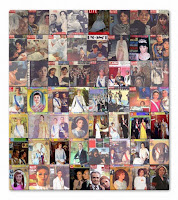



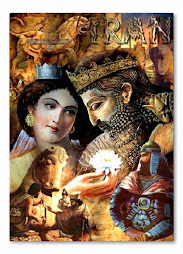

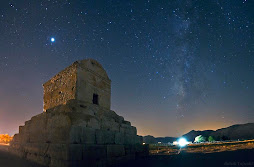


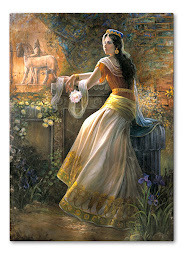
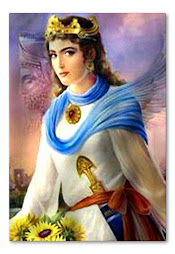


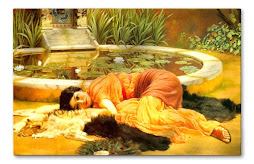
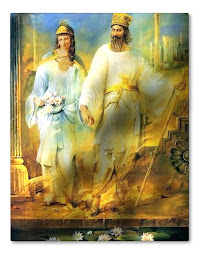
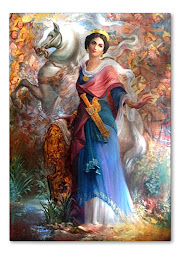
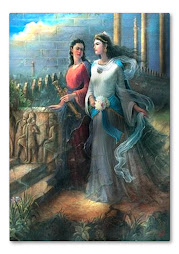

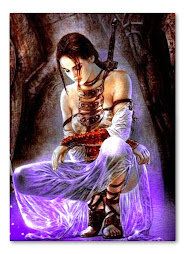

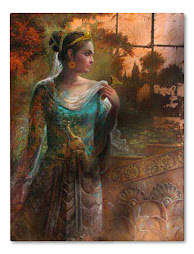
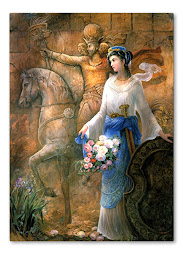
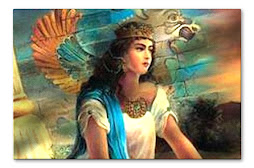
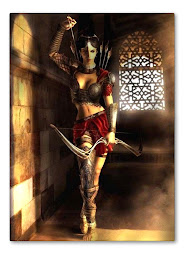
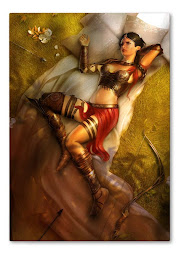
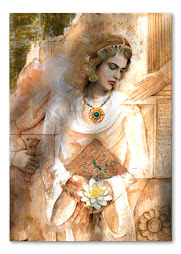

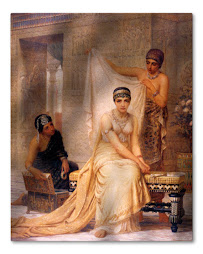
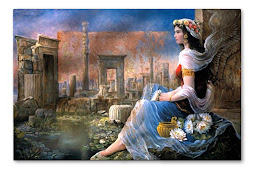

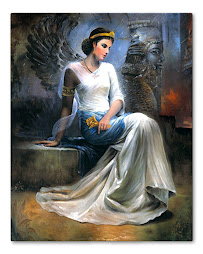
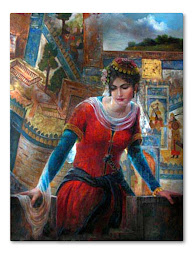
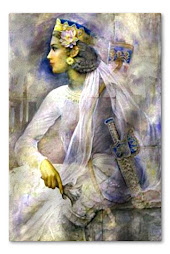
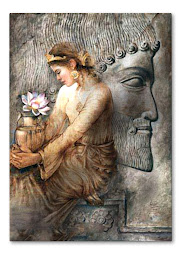
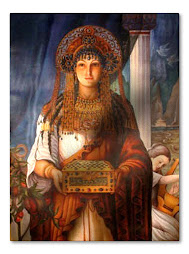
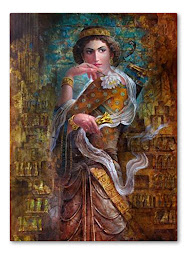
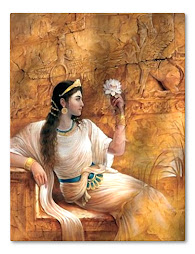
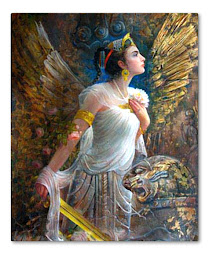
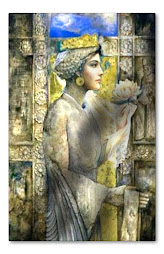


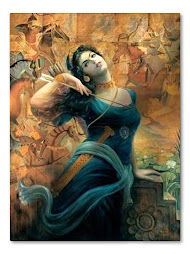



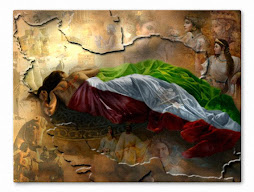
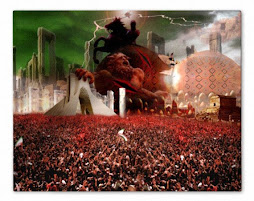




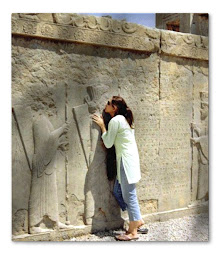
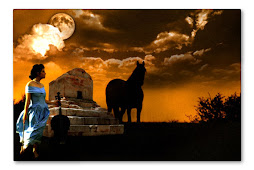

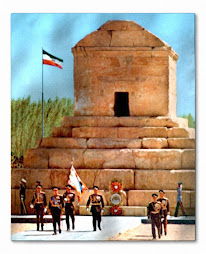
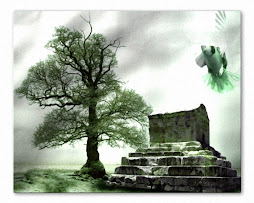
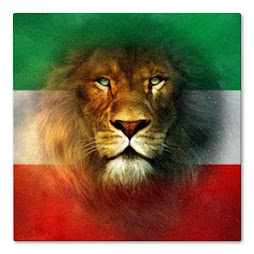
























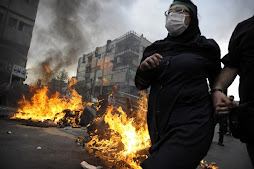.jpg)
